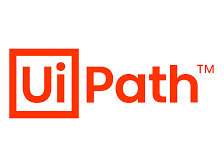What is GIT
Introduction: DevOps, a portmanteau of Development and Operations, is a set of practices that aim to automate and streamline the collaboration between software development and IT operations teams. One crucial component of a successful DevOps pipeline is version control, and Git has emerged as the de facto standard for managing source code. This article delves into the integration of DevOps and Git, exploring how this combination enhances collaboration, accelerates development cycles, and ensures a more reliable and efficient software delivery process.
- Version Control with Git: Git, a distributed version control system, enables developers to track changes in source code efficiently. Its decentralized nature allows teams to work collaboratively on projects without conflicts, as each developer maintains their local copy of the repository. Git facilitates branching and merging, providing a flexible environment for parallel development and experimentation.
- Collaboration and Code Review: DevOps promotes a culture of collaboration between development, operations, and other stakeholders. Git plays a pivotal role in fostering this collaboration by providing mechanisms for code review and collaboration. Pull Requests (PRs) in Git platforms such as GitHub or GitLab allow developers to propose changes, discuss code modifications, and ensure code quality through peer reviews.
- Continuous Integration (CI) with Git: Integrating Git with CI tools automates the process of building, testing, and validating code changes. CI platforms, such as Jenkins or GitLab CI, can be configured to monitor Git repositories for changes. Upon detecting new code commits, these tools trigger automated build and test processes, ensuring that changes do not introduce regressions and are ready for integration.
- Continuous Deployment (CD) Pipelines: Git seamlessly integrates with CD pipelines to automate the deployment of code changes into production environments. CD tools, such as Ansible or Kubernetes, can be triggered by Git events, automating the deployment process. This approach ensures a reliable and repeatable deployment process, reducing the risk of errors and improving the overall stability of the software.
- Infrastructure as Code (IaC) and Git: DevOps emphasizes treating infrastructure as code, allowing teams to manage and version infrastructure configurations alongside application code. Git is an ideal version control system for Infrastructure as Code (IaC) files. Infrastructure changes can be tracked, reviewed, and rolled back using Git, providing a consistent and auditable approach to managing infrastructure.
- GitOps: GitOps is a paradigm that extends the principles of DevOps into the domain of infrastructure and operations. With Git as the single source of truth, GitOps automates the deployment and management of infrastructure and applications. Changes made through Git triggers automated actions in the deployment pipeline, ensuring that the entire system state is described in Git repositories.
- Monitoring and Incident Response: Git can also play a role in incident response and monitoring. By integrating Git with monitoring tools, teams can automatically create and update incident tickets based on detected issues. This ensures that the entire incident response process is documented, and the resolution steps are versioned in Git repositories.


